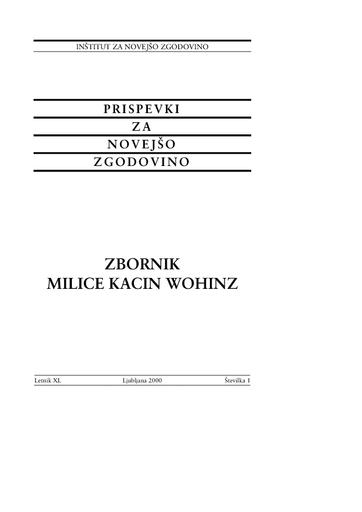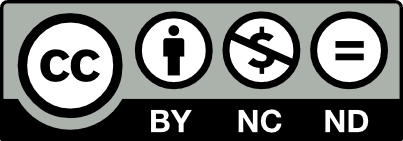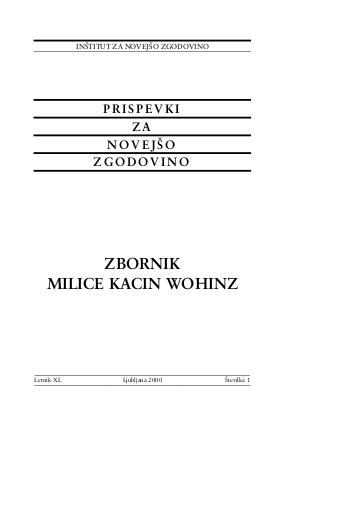/
Periodicals
/
Prispevki za novejšo zgodovino
Trieste, a Shopping Centre

Author(s):Dušan Nećak
Co-author(s):Jasna Fischer (odg. ur.)
Year:2000
Publisher(s):Inštitut za novejšo zgodovino, Ljubljana
Language(s):slovenščina
Type(s) of material:text
Keywords:Trst, Videmski sporazum, trgovina, nakupovalni turizem, meja, prekupčevanje, Trieste, Udine Agreement, trade, shopping tourism, border, reselling
Rights:

This work by Dušan Nećak is licensed under Creative Commons Attribution-NonCommercial-NoDerivs 4.0 International
Files (1)

Name:Prispevki_za_novejso_zgodovino_2000_1.pdf
Size:3.69MB
Format:application/pdf
Permanent link:https://hdl.handle.net/11686/file222
Description
The author presents Trieste as a shopping centre for the Slovenes and the Yugoslavs - a topic which has not been dealt with much by Slovene researchers. He establishes that the flood of shoppers to Trieste reached its peak in the 1970s, when up to 6 million "shopping tourists" from Yugoslavia year visited the city annually. With the help of charts, graphs, photographs, and tables, he presents the development of the "shopping" phenomenon, which was the result of a slightly raised Iron Curtain in the early 1960s and special customs benefits granted to the population living near the border by several local traffic agreements (the Udine, the Gorizia, and the Trieste Agreements).
Metadata (12)
- identifierhttps://hdl.handle.net/11686/1820
- title
- Trst, mesto nakupov
- Trieste, a Shopping Centre
- creator
- Dušan Nećak
- contributor
- Jasna Fischer (odg. ur.)
- subject
- Trst
- Videmski sporazum
- trgovina
- nakupovalni turizem
- meja
- prekupčevanje
- Trieste
- Udine Agreement
- trade
- shopping tourism
- border
- reselling
- description
- The author presents Trieste as a shopping centre for the Slovenes and the Yugoslavs - a topic which has not been dealt with much by Slovene researchers. He establishes that the flood of shoppers to Trieste reached its peak in the 1970s, when up to 6 million "shopping tourists" from Yugoslavia year visited the city annually. With the help of charts, graphs, photographs, and tables, he presents the development of the "shopping" phenomenon, which was the result of a slightly raised Iron Curtain in the early 1960s and special customs benefits granted to the population living near the border by several local traffic agreements (the Udine, the Gorizia, and the Trieste Agreements).
- Avtor prikazuje doslej v slovenski znanosti malo obdelano problematiko Trsta kot nakupovalnega središča za Slovence in Jugoslovane. Ugotavlja, da je vrhunec tega nakupovalnega vala bil v sedemdesetih letih, ko je v Trst na leto prihajalo do 6 milijonov "nakupovalnih turistov" iz Jugoslavije. S kartami, grafikoni, fotografijami in tabelami osvetljuje razvoj tega dogajanja, ki je bilo posledica odprtja "železne zavese" v začetku šestdesetih let in posebnih olajšav, ki so jih bili deležni prebivalci ob meji z maloobmejnimi sporazumi: Videmskim, Goriškim in Tržaškim.
- publisher
- Inštitut za novejšo zgodovino
- date
- 2000
- type
- besedilo
- language
- Slovenščina
- isPartOf
- rights
- license: ccByNcNd
Citirano v (2)
| Tipologija | Avtor(ji) | Naslov | Kraj | Založba | Leto |
|---|---|---|---|---|---|
| 1.16 Uvodnik, predgovor, spremna beseda | Repe, Božo | Italijansko-jugoslovanska meja po drugi svetovni vojni: prehodi meje, turizem, nakupovanje, tihotapljenje | Ljubljana | Znanstvena založba Filozofske fakultete | 2018 |
| 1.16 Uvodnik, predgovor, spremna beseda | Čepič, Zdenko | Čez mejo : prehajanje jugoslovanske državne meje 1945-1970 | Ljubljana | Znanstvena založba Filozofske fakultete | 2018 |
